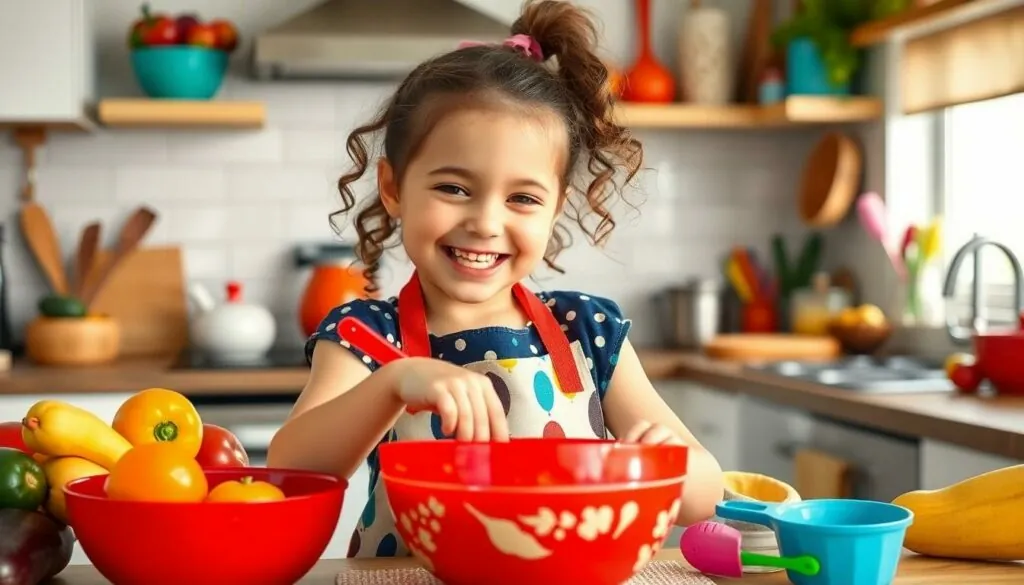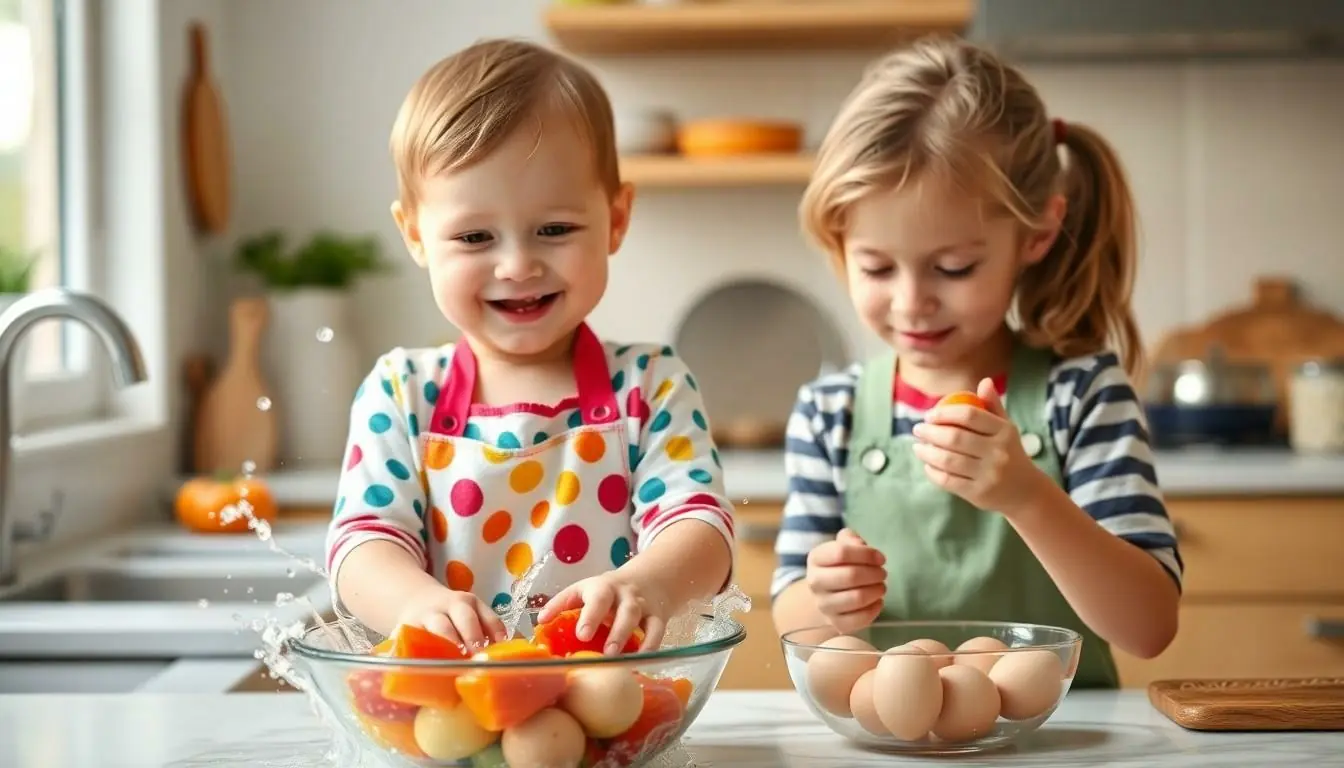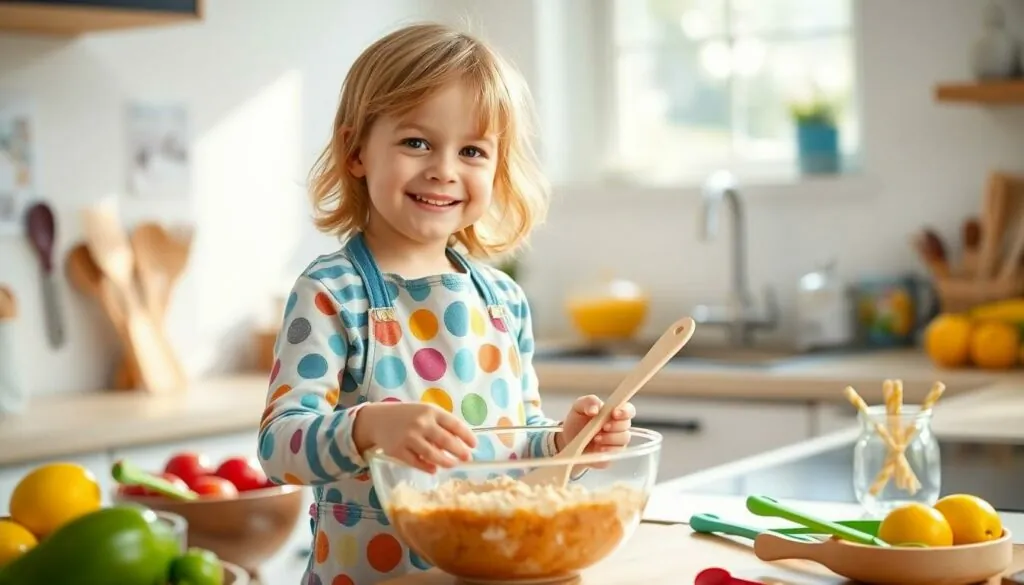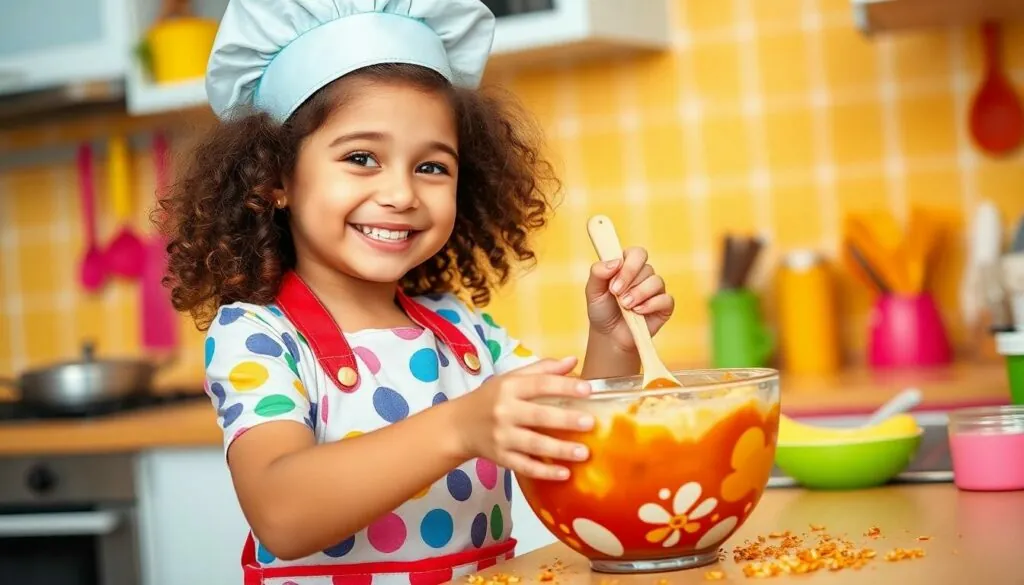Table of Contents
ToggleGetting kids excited about cooking isn’t just about creating tasty meals – it’s about sparking creativity and building lifelong healthy habits. From magical rainbow pancakes to silly-faced pizzas the kitchen becomes a playground where young chefs can explore flavors while learning valuable life skills.
Parents often wonder where to begin when introducing their little ones to cooking. The good news is that kid-friendly recipes don’t require fancy equipment or professional skills. With simple ingredients safe tools and a dash of imagination kids can start their culinary adventure while developing confidence coordination and an appreciation for homemade food. Plus there’s nothing quite like seeing a child’s face light up when they proudly serve their first creation to the family.
Essential Kitchen Tools for Kid-Friendly Cooking
Equipping children with the right kitchen tools creates a safe and enjoyable cooking experience. These age-appropriate tools enable kids to participate fully in meal preparation while building confidence in the kitchen.
Safe Kitchen Equipment for Children
Child-sized cooking equipment promotes proper handling techniques and reduces accident risks. Plastic mixing bowls provide lightweight alternatives to heavy glass containers. Non-slip cutting boards with rubber feet stay firmly in place during food preparation. Silicone oven mitts protect small hands from heat while offering better grip control. A sturdy step stool with non-slip surfaces allows children to reach countertops safely. Plastic measuring cups feature large easy-to-read numbers for accurate portioning.
Must-Have Utensils and Gadgets
Specialized utensils enhance children’s cooking capabilities while maintaining safety standards. Nylon-tipped tongs give kids control when handling hot foods. Child-safe knives with serrated edges cut through soft foods without sharp blades. Silicone spatulas in bright colors make stirring fun while protecting non-stick cookware. Mini whisks fit comfortably in small hands for efficient mixing. Cookie cutters transform simple ingredients into exciting shapes. Egg timers with large displays help children monitor cooking times independently. Rolling pins with adjustable rings ensure consistent dough thickness.
Age-Appropriate Cooking Activities
Cooking activities for children vary based on their developmental stages and motor skills. Each age group benefits from specific tasks that build confidence and culinary competence while maintaining safety.
Toddler-Friendly Kitchen Tasks
Toddlers ages 2-3 excel at simple food preparation tasks that develop fine motor skills. They engage effectively with washing fruits and vegetables in a colander, tearing lettuce leaves for salads, sprinkling cheese on pizza, stirring dry ingredients in a bowl with a wooden spoon. These young chefs also enjoy adding pre-measured ingredients to mixing bowls, kneading soft dough with their hands, mashing bananas with a plastic masher, spreading soft butter on bread. Supervision remains essential while toddlers explore these basic cooking activities.
Cooking Projects for School-Age Kids
Children ages 6-12 demonstrate readiness for more complex cooking tasks with proper supervision. They master measuring dry and wet ingredients, cracking eggs into bowls, using a peeler for vegetables, operating a hand mixer for batters. School-age kids learn to follow simple recipes, assemble sandwiches, make smoothies in a blender with supervision, roll out cookie dough, arrange toppings on pizzas. They gain proficiency in reading food thermometers, setting timers, greasing baking pans, whisking pancake batter. These activities build independence while reinforcing math and reading skills through practical application.
Safety Tips for Cooking With Children
Kitchen safety forms the foundation of cooking with children. Creating a secure cooking environment enables kids to explore culinary skills while staying protected from potential hazards.
Kitchen Safety Rules
- Store sharp utensils in locked drawers separate from child-safe cooking tools
- Position pot handles inward on the stovetop to prevent accidental spills
- Designate specific heat-safe zones marked with colored tape for hot items
- Keep a fire extinguisher in an easily accessible location
- Use non-slip mats near sinks water preparation areas
- Store cleaning products chemicals in locked cabinets away from food items
- Keep electrical appliance cords wrapped secured away from counter edges
- Maintain a well-stocked first aid kit in an easy-to-reach drawer
- Clean spills immediately to prevent slipping hazards
- Use proper food storage containers with secure lids
Adult Supervision Guidelines
- Maintain direct supervision for children under 8 during all cooking activities
- Stay within arm’s reach when kids use kitchen tools or equipment
- Monitor stovetop cooking activities continuously until age 12
- Guide proper hand washing techniques before during after food preparation
- Teach knife skills using child-safe knives starting at age 6
- Demonstrate safe oven mitt usage for handling hot items
- Watch carefully during mixing tasks to prevent ingredient spillage
- Supervise electrical appliance operation until age 10
- Check food temperatures before allowing children to handle items
- Enforce designated cooking zones based on age skill level
Fun and Easy Recipes Kids Can Make
Kid-friendly recipes create opportunities for children to practice their kitchen skills while building confidence. These recipes require minimal adult supervision with age-appropriate tasks.
No-Bake Recipes for Beginners
No-bake recipes offer a perfect starting point for young chefs to explore cooking independently. Kids can create tasty treats like fruit kebabs with strawberries bananas grapes on wooden skewers. Making trail mix combines pantry staples such as cereal dried fruit nuts into customized snack portions. Layered yogurt parfaits let children arrange berries granola honey in clear glasses. Rolling energy balls mixes oats peanut butter honey coconut into bite-sized treats. Assembling sandwich shapes using cookie cutters transforms lunch into an artistic activity. Kids can spread nut butter layer banana slices create faces on rice cakes for healthy snacks.
Simple Baking Projects
Basic baking introduces children to measuring mixing techniques through structured recipes. Kids mix ingredients for sugar cookies using measuring cups spoons to learn kitchen math. Three-ingredient peanut butter cookies combine pantry staples into chewy treats. Mini pizzas allow children to spread sauce sprinkle cheese add toppings on English muffins. Oatmeal raisin bars mix dry wet ingredients in one bowl for an easy snack. Banana muffins incorporate mashing mixing pouring skills into breakfast treats. Children learn temperature timing concepts while creating crispy baked chicken tenders with seasoned breadcrumbs.
Benefits of Teaching Kids to Cook
Teaching kids to cook creates lasting impacts on their development while fostering independence. Research shows that children who learn cooking skills demonstrate improved confidence levels across multiple areas of their lives.
Life Skills Development
Cooking teaches children essential mathematical concepts through measuring ingredients splitting recipes. Kids learn to read sequentially by following recipe steps practicing comprehension with real-world applications. The kitchen environment develops time management abilities as children coordinate multiple tasks monitoring cooking times. Young chefs gain planning skills by gathering ingredients preparing workspaces organizing cleanup tasks. These experiences strengthen problem-solving capabilities when adapting recipes dealing with cooking challenges measuring fractions converting units.
Building Healthy Food Relationships
Children who cook develop positive associations with fresh ingredients nutritious meals. Hands-on kitchen experience encourages kids to try new foods expand their palates beyond familiar options. Research indicates that young chefs demonstrate increased fruit vegetable consumption compared to non-cooking peers. Kids learn to identify wholesome ingredients understand basic nutrition principles through direct food preparation. The cooking process connects children to their food sources fostering appreciation for whole ingredients seasonal produce. Regular kitchen involvement helps children recognize hunger fullness signals develop mindful eating habits make informed food choices.
Conclusion
Teaching kids to cook is a transformative journey that goes far beyond the kitchen. By providing children with age-appropriate tools supervision and engaging recipes parents can help nurture lifelong skills and healthy habits. The kitchen becomes a classroom where kids learn mathematics reading and time management while developing confidence and independence.
As children explore the culinary world they’ll discover the joy of creating meals fostering creativity and building a positive relationship with food. Most importantly they’ll gain essential life skills that will serve them well into adulthood. Starting this cooking adventure today can spark a lifetime of healthy eating habits and cherished family memories.





